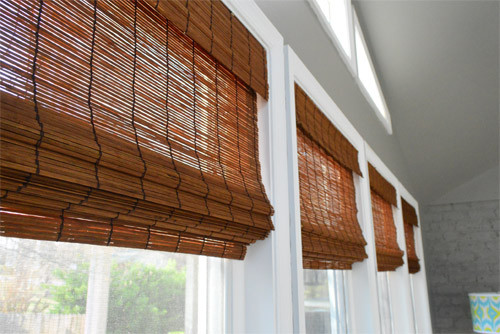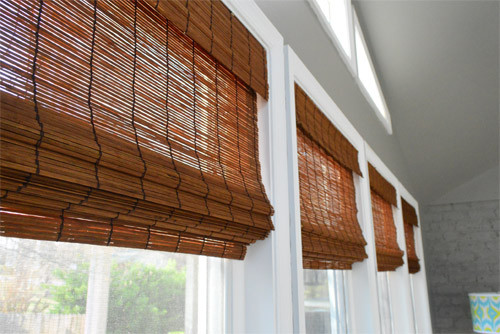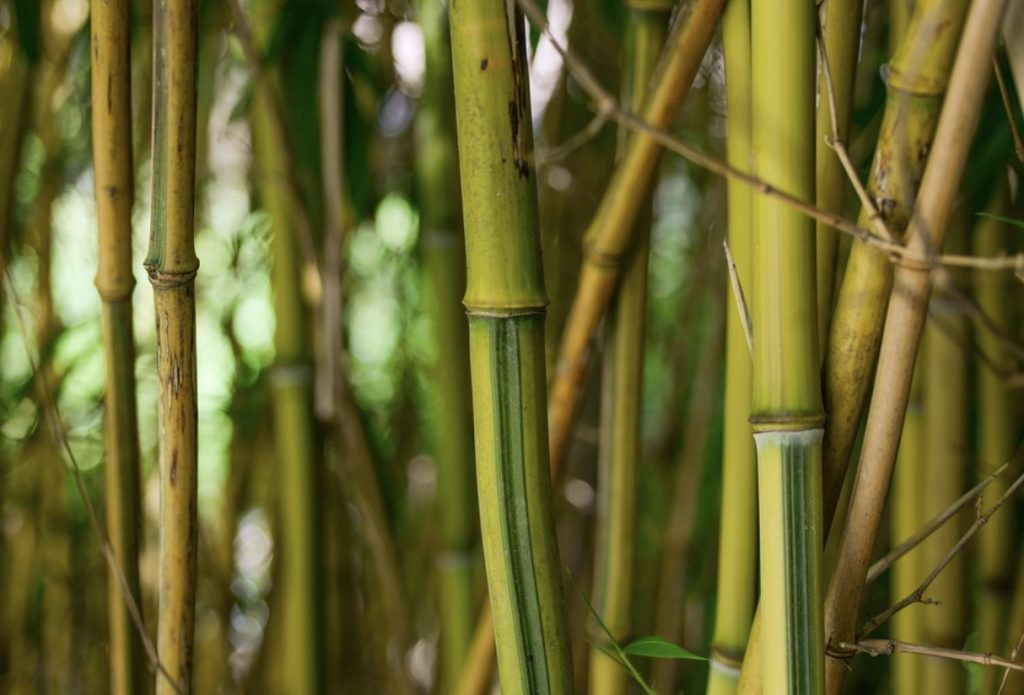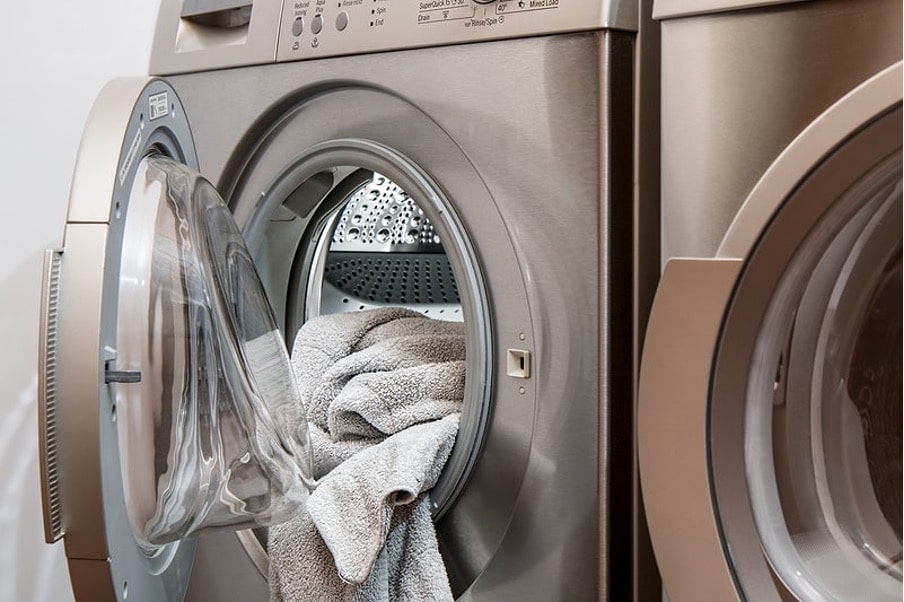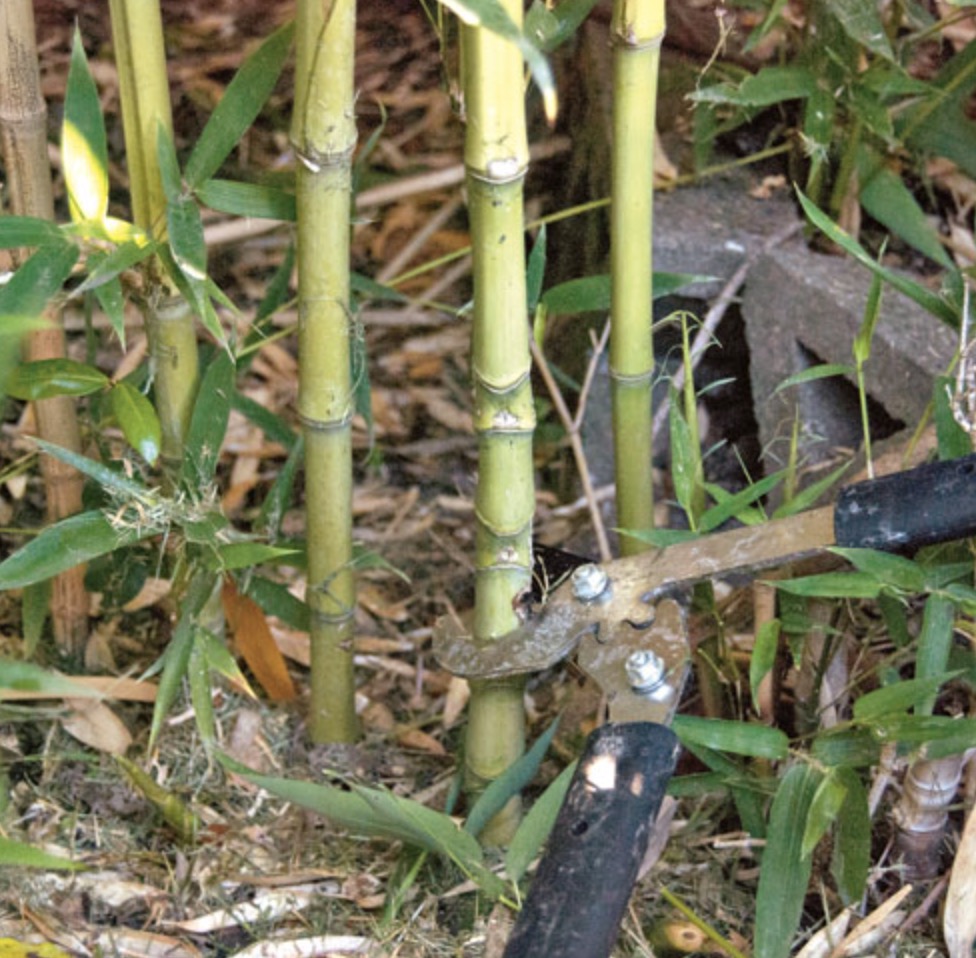Many environmentalists are moving towards using bamboo because it is a sustainable material. It is also highly applicable when appearing everywhere, from the living room to the kitchen.
However, preserving and cleaning bamboo has never been easy, especially with a tool that comes into contact with bacteria like a cutting block.
So, how to clean bamboo cutting boards properly? Are you interested in the detailed steps? Let’s find out in this article.
How To Clean Bamboo Cutting Board?
To properly clean a bamboo chopping block, you need to know how it differs from a regular wooden block.
First, bamboo is grass, not wood. This material is much stronger, durable, and hygienic despite its similar appearance.
Using bamboo material means contributing to environmental protection because of its sustainable benefits. Yet, this also means increased maintenance efforts.
Moisture can damage the texture of bamboo. The more water the block absorbs, the easier it to crack and warp when dry.
So, even if you want to clean this block, keep in mind the top rule of thumb is to always keep it as dry as possible.
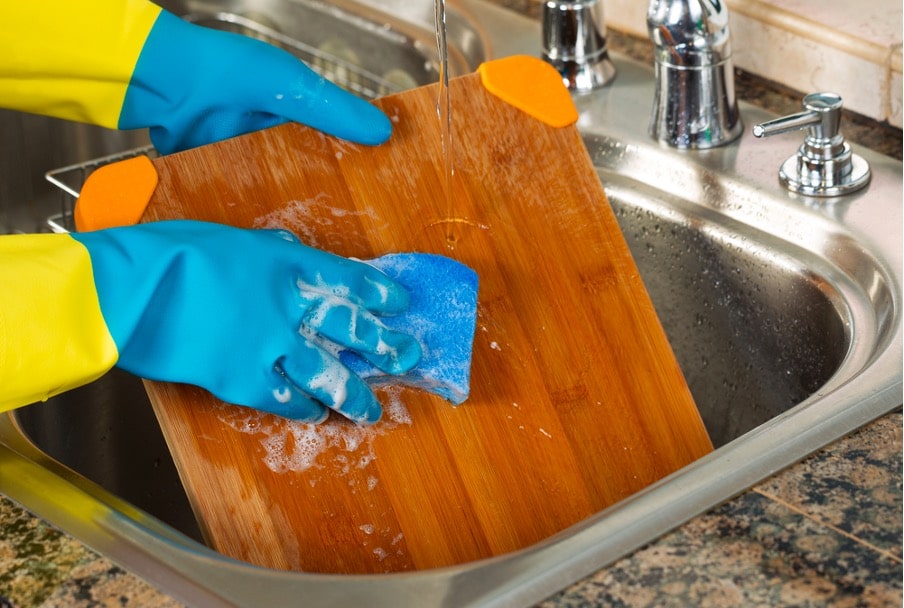
Washing Bamboo Chopping Blocks
You can try some of the following methods to clean and disinfect surfaces. The ingredients can be easily found in common materials.
- Kosher and lemon salt: Use half a lemon and kosher salt to disinfect, deep clean, and remove stains. Lemon is a natural cleanser, while salt acts as an abrasive.
- Bleach solution: Mix one gallon of water and two teaspoons of bleach in the sink. Use this solution to clean the surface and then let it dry. It is best not to soak the chopping block in the solution.
- Vinegar with baking soda (optional): For unpleasant and pungent odors, a mixture of vinegar will be the best solution. You can also add baking soda to increase the effectiveness.
You can choose from many ways to clean the surface of a bamboo block. These methods are all very effective.
Yet, whatever cleaning agent you choose, you should follow some general rules.
Wash Your Board Quickly
It would help if you washed the chopping block quickly after use. Also, avoid washing for too long and use hot water so as not to damage the product.
When scrubbing, you should also not use abrasive materials. If you want to remove nasty stains, odors, or stubborn food particles, use a cloth or your hands.
Avoid Submerging And Soaking In Water
Bamboo is very sensitive to moisture and high temperatures. So always wash it by hand to protect it from warping and cracking.
Rinse Carefully
Hold the chopping block under running water to remove all soap and food residue. However, you should not leave the surface in contact with water for too long but flush as quickly as possible.
Dry Immediately
After cleaning the surface, use a soft cloth to dry. Finally, stand the chopping block upright and let it air dry for a few hours.
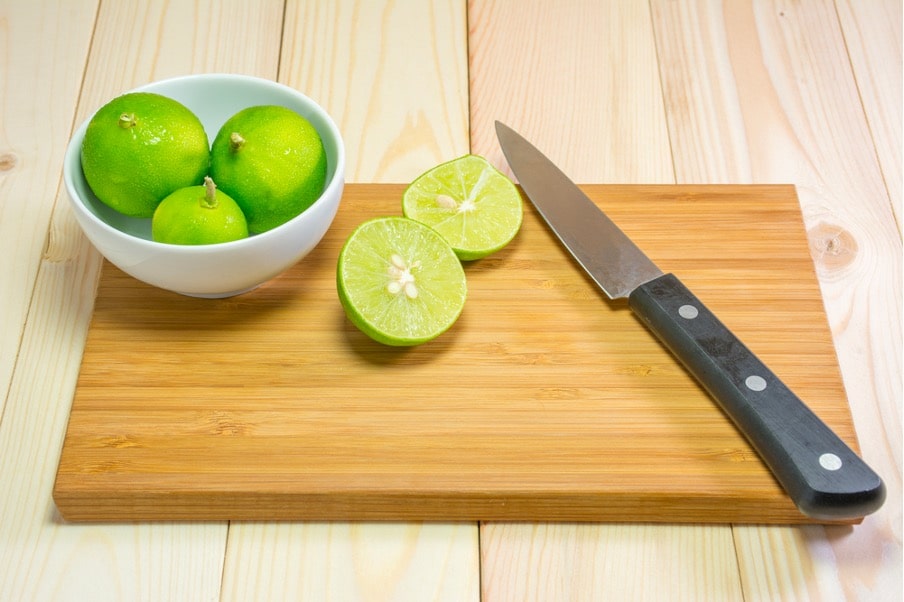
Removing Odors And Stains
If your bamboo chopping block is too smelly and dirty over time, don’t worry. Follow these steps to restore the product’s original look.
Apply Coarse Sea Salt On The Top
After rinsing your chopping block, sprinkle some coarse salt over the damp yellowed areas. The salt will act as an abrasive to remove the stain and absorb any remaining moisture.
If you want a stronger effect, use pureed salt or baking soda.
Use Halved Lemon To Scrub The Surface
Lemon has an effective deodorizing and killing effect. Simply place the citrus side in the salt and rub it on the board, edges, and corners.
Be sure to scrub thoroughly until the salt has dissolved into the chopping block. If you don’t have lemons, limes will be a perfect substitute.
Cover The Top
Next, spread an extra layer of salt on the surface and leave it overnight. Do not rub this salt as it will dry out the lemon juice.
Let the board sit for two hours if you don’t have much time. That should now be enough for the lemon to seep into the texture of the surface.
Remove The Salt
You should use a spatula to scrape the salt. Then, take a damp cloth and wipe off any remaining residue.
Do not rush to throw away these salt deposits. You can store them in a jar and reuse them until the white color is gone.
How To Disinfect Bamboo Chopping Block?
Because of health issues, you need to know how to disinfect bamboo cutting boards.
The biggest advantage of this material is its strong antibacterial ability. However, you should perform some enhanced disinfection measures from time to time.
To reduce the risk of food contamination, clean and disinfect the board every time it comes into contact with raw food.
Use a sponge to rub the baking soda onto the board’s surface. Alternatively, you can use a solution of water and white vinegar.
Leave it on for a few minutes, and then rinse it off with water. Then use a soft cloth to dry the surface.
You must not use a microwave oven to sterilize the product. Too much heat will warp the product edges.
How To Condition Bamboo Chopping Block?
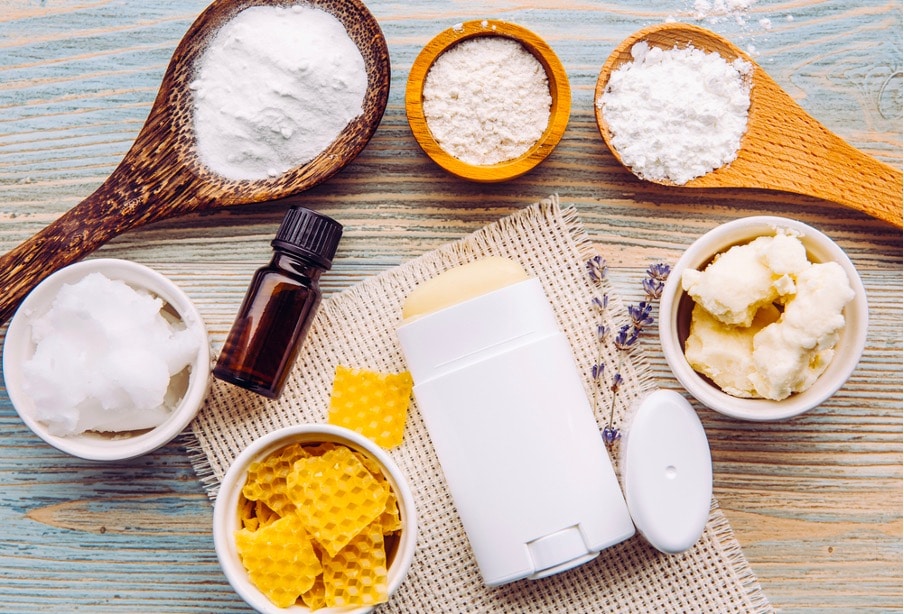
When you buy a block, you should condition it with a little mineral oil to increase durability on the surface. Over time, maintain this action to prevent cracks from appearing.
The frequency of regular oiling should be about once or twice per month to keep the shine of the bamboo and not dry it out.
Choosing the right type of conditioning oil is also very important. You should not use cooking oil because it is easy to go rancid and has poor durability.
Some healthy oils that you can use are mineral oil, beeswax, carnauba, and coconut oil. The combination of mineral oil and beeswax also increases the stain resistance and waterproofing of the product.
To easily condition the surface, warm the oil before use. Pour oil on the surface and use a soft cloth to wipe it clean.
The direction of oiling should follow the direction of grains. If they look messy, you should move in a circle.
Let the cutting board rest for at least an hour for the oil to soak into the bamboo. Then, take a clean towel to wipe the entire surface.
To learn more about this process, check out the video below.
FAQs
If you still have any questions regarding the hygiene of bamboo cutting boards, continue reading below.
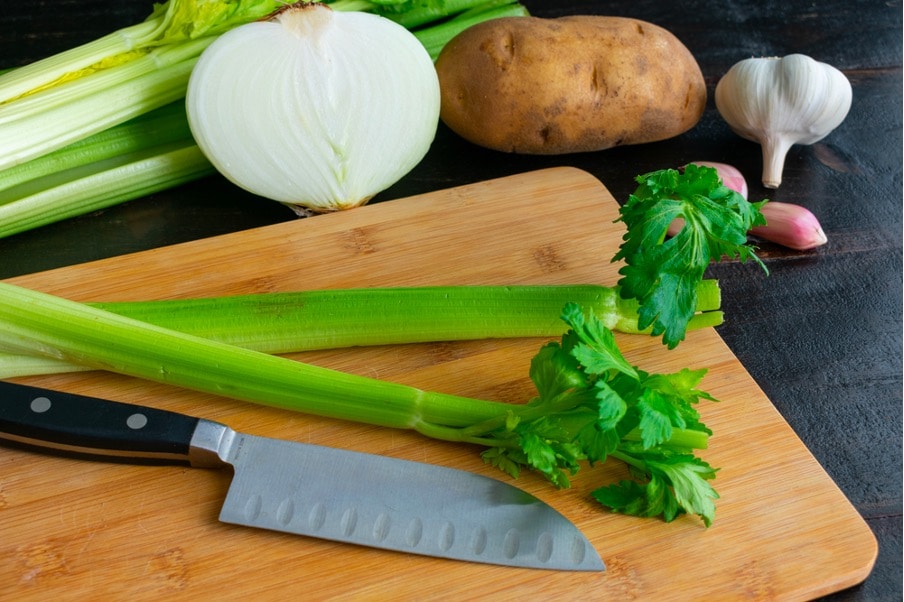
Are Bamboo Cutting Boards Machine Washable?
Bamboo is not resistant to water retention. Therefore, it can crack or warp, unlike ordinary wood.
It is the disadvantage of the product. You should not put any bamboo boards in the dishwasher as the high heat can damage the surface.
It is also forbidden to clean bamboo chopping blocks with hot water. Instead, use a warm water and soap mixture to rinse in a few minutes.
Should Bamboo Cutting Boards Be Oiled?
To maintain the water resistance and shine of the block surface, you should oil the board regularly.
A good schedule for taking care of your cookware is once a month. However, if you are a dedicated cook, consider oiling every two weeks.
The best oil to use is food-grade mineral oil or any similar lubricant.
Coconut oil is also a good choice. However, it is also the only cooking oil you can use on a block.
Conclusion
If you follow the cleaning steps for bamboo cutting boards as directed, congratulations, your product will always be hygienic and ensure food safety.
Regular maintenance also helps keep the cutting board shiny and free of cracks. Therefore, you can extend its service life.
What do you think about this guide? Don’t forget to share your results with the community so everyone can learn.
Help Us! Share on:


